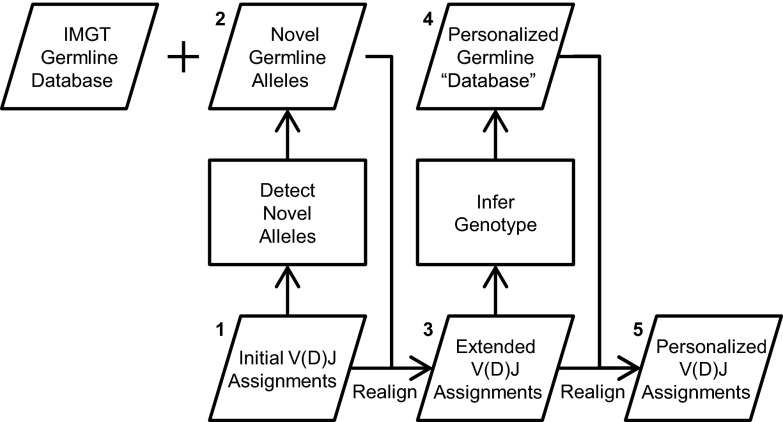Fig. 1.
Overview of the TIgGER workflow. IMGT/HighV-QUEST is used to determine initial V(D)J assignments (step 1). TIgGER uses these initial gene segment assignments to analyze mutation patterns and detect a putative set of novel alleles (step 2). The germline gene segment database is then extended by adding these novel alleles to improve the initial V(D)J assignments (step 3). The extended V(D)J assignments are then analyzed to determine the genotype of a subject, and generate their personalized germline database (step 4). A final set of V allele assignments is then made (step 5).

